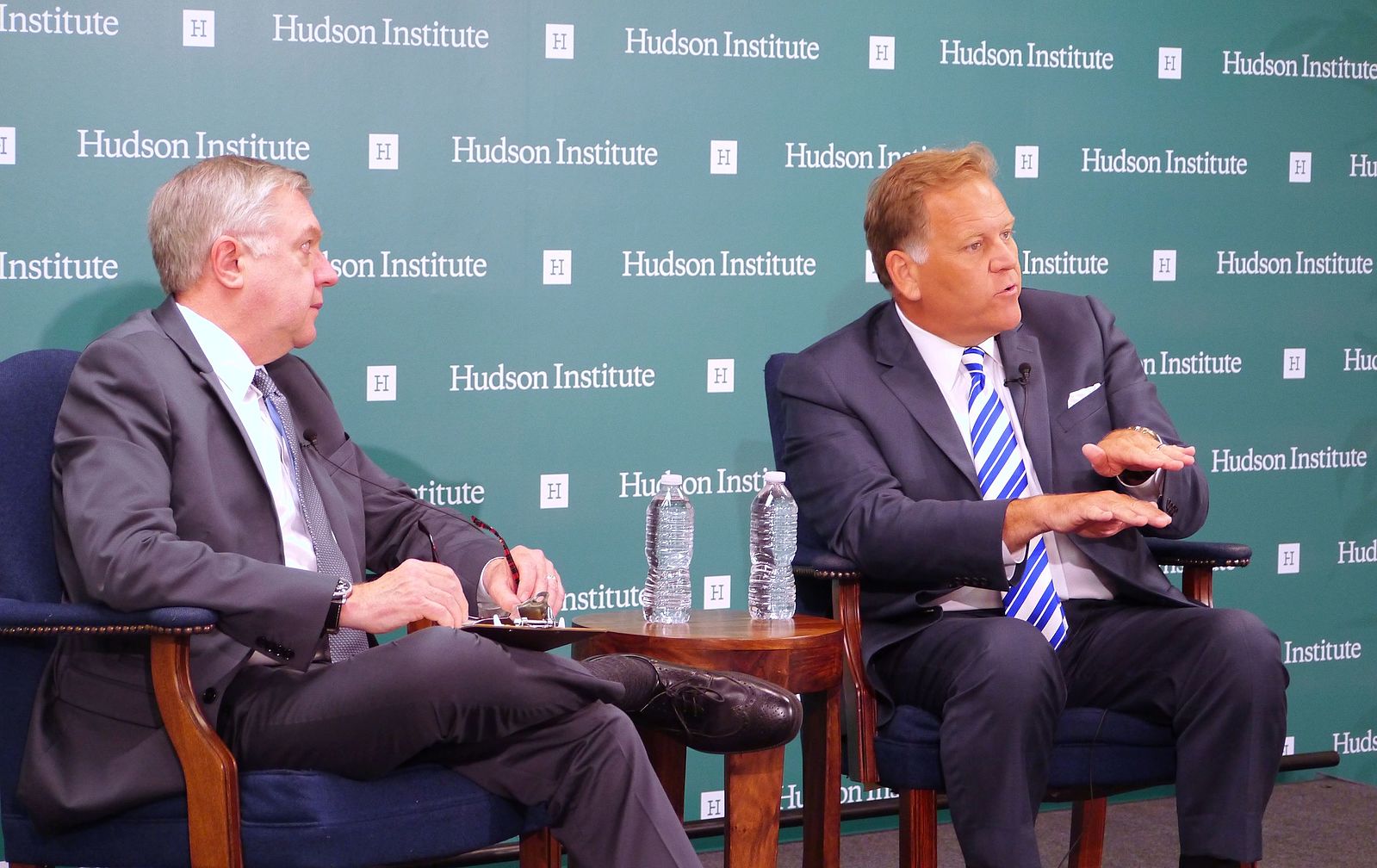Setting the Record Straight After Moalin
Some commentators have suggested that then-FBI Deputy Director Sean Joyce misled Congress in 2013 about the NSA’s metadata program. I am confident that Sean testified to the facts as he understood them—not because I know the facts, but because I know Sean.

Published by The Lawfare Institute
in Cooperation With

Rachael Hanna’s summary of the decision by the U.S. Court of Appeals for the Ninth Circuit in United States v. Moalin is both comprehensive and excellent, but there is one point that I wanted to highlight. As explained in the opinion summary, the Ninth Circuit concluded that “under established Fourth Amendment standards, the metadata collection, even if unconstitutional, did not taint the evidence introduced by the government at trial. To the extent the public statements of government officials created a contrary impression, that impression is inconsistent with the contents of the classified record.”
I do not know the classified record, but my concern is that outside observers, similarly ignorant, might conflate the question of whether National Security Agency (NSA) metadata contributed to the investigation of Moalin with the question of whether it could have tainted Moalin’s trial and conviction. As I explain below, those are very different questions, and it is entirely possible—as a matter of law—for the NSA’s metadata to have contributed to the FBI’s investigation without tainting what occurred thereafter in the investigation. Still less does the absence of taint require that the “public statements of government officials” were in any way misleading, as the ACLU recently alleged in a Washington Post story about the case.
In any event, that is not what the Ninth Circuit held. It decided only that the evidence against Moalin was not tainted by the NSA metadata program, such that even if the latter was unconstitutional, the former was still properly admissible at trial. To the credit of its author, the Post story was changed after initial publication to remove a statement that the Ninth Circuit did “not agree with the FBI’s assertion, and found that the bulk phone records collection program was not instrumental to the arrests.” The edited story instead references the court’s conclusion that the NSA “program was not so essential to the case that the convictions should be tossed out.” Regardless of the classified record in Moalin, that is a more accurate description of how the court actually ruled.
I care about this because the “public statements of government officials” to which the Ninth Circuit referred are those of former Deputy Director of the FBI Sean Joyce, a friend and former colleague of mine. As described by the Ninth Circuit, here is what Sean said about Moalin (alteration in original, emphasis added):
[I]n a hearing before the House Permanent Select Committee on Intelligence held shortly after the Snowden disclosures, then-FBI Deputy Director Sean Joyce described a post-9/11 investigation conducted by the FBI that initially “did not find any connection to terrorist activity. Several years later, under [FISA Subchapter IV], the NSA provided us a telephone number only in San Diego that had indirect contact with an extremist outside the United States.” Joyce explained that the FBI “served legal process to identify who was the subscriber to this telephone number,” then, after “further investigation and electronic surveillance that we applied specifically for this U.S. person with the FISA Court, we were able to identify co-conspirators, and we were able to disrupt” their financial support to a Somali designated terrorist group. According to Joyce, “if [the FBI] did not have the tip from NSA, [it] would not have been able to reopen that investigation.” In another congressional hearing, Joyce specifically named Moalin as the target of the investigation.
This is a fair summary of what Sean testified to Congress. The exchange between Sean and Rep. Mike Rogers went as follows:
ROGERS: And so, without that initial tip [from NSA], you might not have found the other very weighty evidence that happened subsequent to that tip. Is that correct?
JOYCE: Absolutely.
ROGERS: So, in the case of—of Malalin (ph) in 2007, the very fact that under the business 215 records, there was a simple tip that was, we have someone that is known with ties to Al Qaida’s east African network calling a phone number in San Diego. That’s really all you got, was a phone number in San Diego. Is that correct?
JOYCE: That is correct.
ROGERS: And—and according to—in the unclassified report that tip ultimately led to the FBI’s opening of a full investigation that resulted in the February 2013 conviction. Is that correct?
JOYCE: Yes, it is, Chairman.
JOYCE: … if we did not have the tip from NSA, we would not have been able to reopen...
ROGERS: Right, and—when [NSA] dipped that [al Qaeda] number into the—to the business records, the preserved business records from the court order—they dipped a phone number in, and a phone number came out in San Diego. Did you know who that person was when they gave you that phone number?
JOYCE: No, we did not. So we had to serve legal process to identify that subscriber [Moalin] and then corroborate it. And then we later went up on electronic surveillance with an order through the FISC.
Although I doubt Sean participated in the Moalin investigation or had any direct knowledge of it, I am quite confident that before the FBI sent its deputy director to testify in the House Intelligence Committee about the highly controversial NSA bulk telephony metadata program in the aftermath of the Snowden revelations, it carefully vetted his testimony based on the facts as they were then known within the bureau. I am absolutely confident that Sean testified to the facts as he understood them—not because I know the facts, but because I know Sean.
On the basis of the record described by Sean and recounted in the Ninth Circuit’s opinion, it’s no surprise that the government argued, and the court held, that even if the NSA metadata collection was illegal, the illegality did not taint or undermine Moalin’s conviction or require any suppression of evidence. Here is what the government asserted in its brief:
[F]or at least three separate reasons, the evidence introduced at trial in this case was not “fruit” of the challenged NSA program. First, an investigative lead or tip does not taint the entire subsequent investigation, as the intervening investigative steps serve to attenuate the evidence. Second, by themselves, the FISC orders authorizing the Title I surveillance attenuate the evidence from the initial “tip.” And, third, the classified record provides an additional reason why the trial evidence was not “fruit” of the NSA program.
In other words, as the government argued in its brief, even if the investigation of Moalin would not have been reopened but for the NSA metadata, “the Supreme Court has repeatedly held that but-for cause, or causation in the logical sense alone” is not the standard for finding taint and ordering derivative suppression of evidence. In support of its position, the government relied on a prior decision of the Ninth Circuit in United States v. Smith, upholding a conviction in which “the government had illegally accessed a voicemail message from the defendant that suggested that he was involved in insider trading,” and the “voicemail led the Securities and Exchange Commission to investigate the defendant,” which in turn ultimately led to his conviction for violating securities laws.
Although the Ninth Circuit was critical of the NSA program, it understood and accepted the government’s argument about taint (citations omitted):
Contrary to defendants’ assumption, the government maintains that Moalin’s metadata “did not and was not necessary to support the requisite probable cause showing” for the Subchapter I [FISA] application in this case. Our review of the classified record confirms this representation. Even if we were to apply a “fruit of the poisonous tree” analysis, we would conclude, based on our careful review of the classified FISA applications and related information, that the FISA wiretap evidence was not the fruit of the unlawful metadata collection. Again, if the statements of public officials created a contrary impression, that impression is inconsistent with the facts presented in the classified record. Because the wiretap evidence was not “unlawfully acquired,” suppression is not warranted.
There are many cases that reach similar results, finding that evidence downstream from a (possible or confirmed) constitutional violation is still admissible for any of at least three reasons—because the downstream evidence is attenuated from the upstream violation, because it had an independent source, or because it otherwise inevitably would have been discovered, as described in well-known sources such as 43 ALR 3d 385 (1972) and 3A Fed. Practice & Procedure § 688 (4th ed.). The Supreme Court’s 1963 decision that first used the phrase itself stated, “We need not hold that all evidence is ‘fruit of the poisonous tree’ simply because it would not have come to light but for the illegal actions of the police. Rather, the more apt question in such a case is whether, granting establishment of the primary illegality, the evidence to which instant objection is made has been come at by exploitation of that illegality or instead by means sufficiently distinguishable to be purged of the primary taint.”
I do not have access to the classified record, of course, and I acknowledge that taint analysis can sometimes be complex. Perhaps there is an argument that the FBI inevitably would have reopened its investigation into Moalin regardless of the NSA tip, or that it had an independent reason or reasons for doing so—for example, a separate source of information, perhaps developed after the NSA metadata was received, that would have refocused attention on Moalin in any event. But the Ninth Circuit’s decision does not say that, and it does not foreclose the conclusion that, even if the NSA metadata had been the exclusive reason for the FBI’s renewed interest in Moalin, any taint was dissipated by the bureau’s intervening investigative actions. This is particularly true if, as implied by the court, the NSA metadata was not even used in the FISA applications.
Nor does the Ninth Circuit’s ruling call into question the accuracy of Sean’s statement that the NSA tip in fact caused the FBI to reopen its investigation (even if the investigation might or would inevitably have been reopened thereafter based on a different source of information), nor does it create any necessary inconsistency between his testimony, the government’s argument and the ultimate ruling. Indeed, even if the NSA metadata turned out to have had no impact at all on any aspect of the Moalin investigation, which I highly doubt, I would remain fully confident that Sean was simply misinformed by his subordinates at the FBI, not that he tried to mislead Congress or the public.
Sean Joyce is a friend, and he was a dedicated FBI agent and public servant. I have the highest confidence in his integrity and honesty. We live in an era of personal attack. But the Ninth Circuit’s opinion does not support such an attack on him.




.png?sfvrsn=48e6afb0_5)
